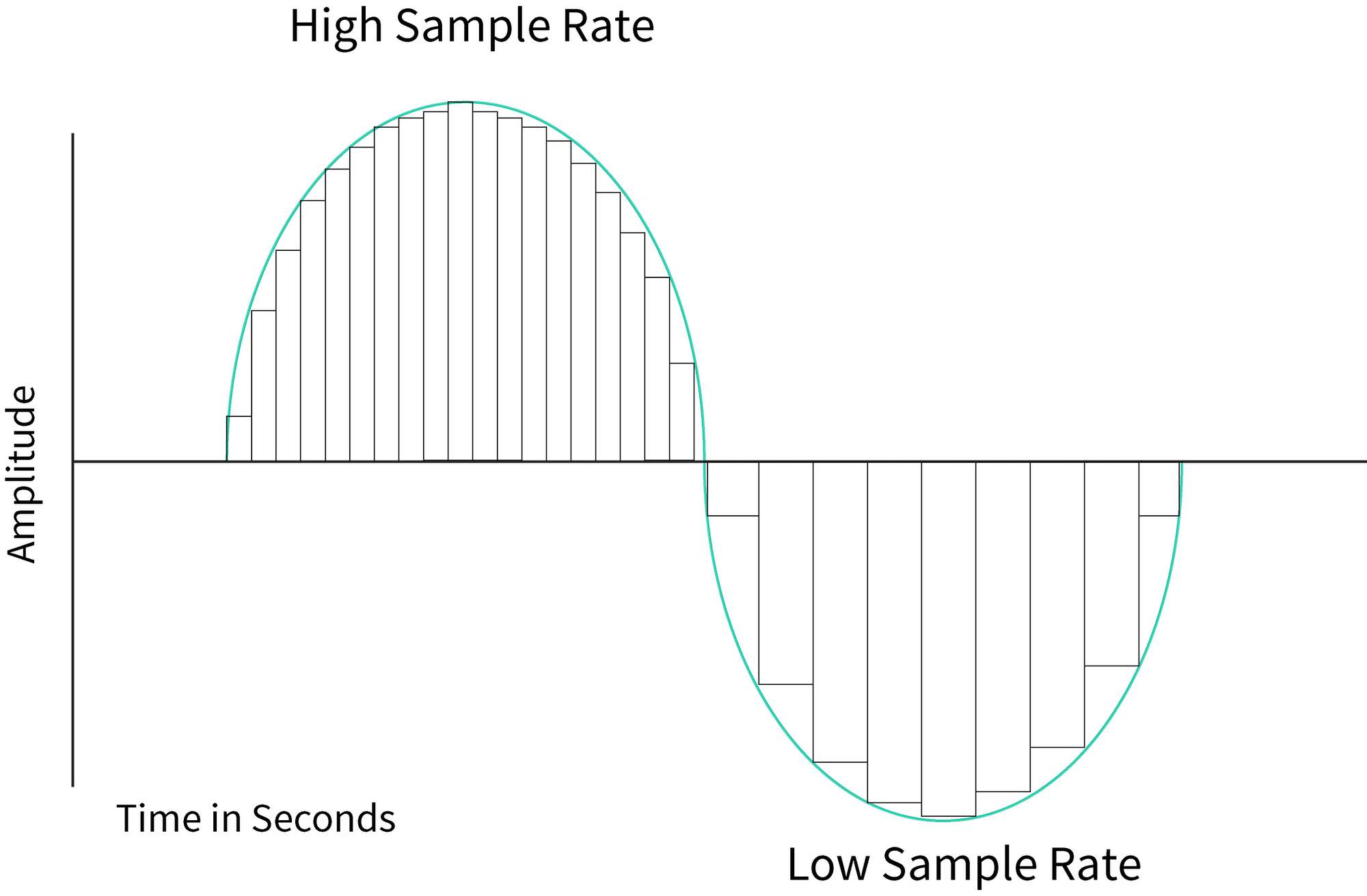
Welcome to the intriguing realm of sound design, where every hertz matters. As sound designers, one of our prime focuses is creating the most authentic audio experiences possible. In this quest, understanding and manipulating sample rates can make the difference between ordinary and extraordinary audio production. This article aims to unpack the mystery of the sample rate, introduces the concept of the Nyquist frequency and explains why these concepts are crucial in your sound design journey.
In the most basic terms, sample rate refers to the number of samples of audio carried per second, measured in Hertz (Hz) or Kilohertz (kHz). When analog audio signals are converted to digital, they are ‘sampled’ or taken in snapshots at regular intervals. Each snapshot represents the intensity of the sound wave at that specific point in time. Consider the sample rate as the audio equivalent of the frame rate in video. Just as a higher frame rate provides a smoother, more detailed video playback, a higher sample rate can provide a more detailed and higher quality audio playback. To understand it better, think of it like that: If you want to make a slow motion film scene you have to record the video at a very high frame rate in order to not get a stuttery film that looks rather like a flipbook when you stretch it to slow motion. After the video is stretched you need at least lets say 30fps to make it look smooth. Now when you record audio at a low sample rate and then stretch it, you will get a grainy sound where you clearly hear that the audio has been stretched. The time stretching will introduce artifacts. But if you record your audio at a high sample rate like 96kHz the audio file has way more information and stretching or pitch shifting the audio will not introduce artifacts so easily. You might be wondering how high the sample rate needs to be to capture an audio signal faithfully. This brings us to an essential principle in digital audio, the Nyquist Frequency, which can guide us in choosing the most appropriate sample rate.

The Nyquist Frequency, named after Swedish-born American electronic engineer Harry Nyquist, is a fundamental principle in digital audio processing. It states that to accurately reproduce a signal, it must be sampled at least twice its highest frequency. So, if you’re recording an audio signal with a maximum frequency of 20kHz (the upper limit of human hearing), your sample rate needs to be at least 40kHz, according to the Nyquist theorem. This is vital because if the sampling frequency is less than twice the highest frequency of the signal, a phenomenon called ‘aliasing’ occurs. This is where high-frequency components are misrepresented as lower frequency components, resulting in distortion and a loss of audio fidelity.
Selecting the right sample rate for your audio project is a crucial decision that can significantly impact the final quality of your output. However, it’s not as straightforward as simply choosing the highest possible sample rate. A variety of factors should be considered to ensure you’re making the most appropriate choice.
1. Consider the End Format: The ultimate purpose and format of your audio project should heavily influence your sample rate choice. If you’re creating audio for a CD, a 44.1kHz sample rate would be sufficient as it is the standard. For video, DVD, and digital TV applications, 48kHz is more suitable. If you’re working on a project that will be subjected to heavy audio processing, or if you’re aiming for the utmost quality and detail, higher rates like 96kHz or even 192kHz might be warranted.
2. Evaluate Your Processing Needs: If you anticipate substantial manipulation of the audio in post-production – like pitch shifting, time-stretching, or extensive EQ adjustments – a higher sample rate will provide more data to work with, resulting in higher-quality manipulations and effects. We as sound designers will mostly work in 96kHz where music producers prefer 44.1kHz and 48kHz. Keep in mind, the higher the sample rate the more cpu you need when you are processing them. Making an EDM song out of the box with lets say hundred tracks in a 96kHz session will need so much cpu that most computers can’t handle it. The processing power needed is more than twice!
3. Check Your Equipment Capabilities: Another practical consideration is the capabilities of your recording and playback equipment. There’s no point choosing a sample rate that your gear cannot handle, as this can lead to unnecessary complications and won’t improve your audio quality. An extreme example would be recording at 192kHz with a Shure SM-57, it is simply nonsense, because the microphone will pick up frequency to 15kHz but not above. 192kHz is for recording with microphones that capture frequencies up to 96kHz.
4. Balance Quality with Storage: Keep in mind that higher sample rates mean larger file sizes. If storage is a concern, you might need to strike a balance between achieving the best quality and managing your storage capacity efficiently. Sometimes when you are working in a session with 192kHz your file storage will kind of explode because every audio file that you created in your session has a huge amount of data.
A higher sample rate can offer greater flexibility and quality when manipulating audio. This is particularly true when applying effects and processes that alter the frequency content of your audio.
For example, consider the process of pitch shifting, where the pitch of a sound is raised or lowered. A higher sample rate will allow for more drastic pitch shifting before audio artifacts and loss of quality become noticeable. Furthermore, with a higher sample rate, you also gain more room for equalization. Detailed EQ adjustments can be made without affecting the audible frequency range. Lastly, when it comes to time-stretching (expanding or contracting the length of an audio clip without altering its pitch), higher sample rates provide more granular data, resulting in smoother, more natural-sounding alterations.
In the realm of sound design, understanding the science of sound is as important as having a good ear. The sample rate, tied closely with the concept of the Nyquist Frequency, plays a pivotal role in determining the quality and flexibility of your audio work. Whether you’re recording high-frequency sounds or manipulating audio in post-production.

Jonas, co-founder of Just Sound Effects, is a graduated sound designer and captures field recordings all over the world, always looking for unique soundscapes and new places to explore.

All prices are net, additional VAT may apply.
By subscribing to our newsletter you agree to our privacy policy.

All prices are net, additional VAT may apply.
© 2025 JUST SOUND EFFECTS GbR – All rights reserved
By subscribing to our newsletter you agree to our privacy policy.